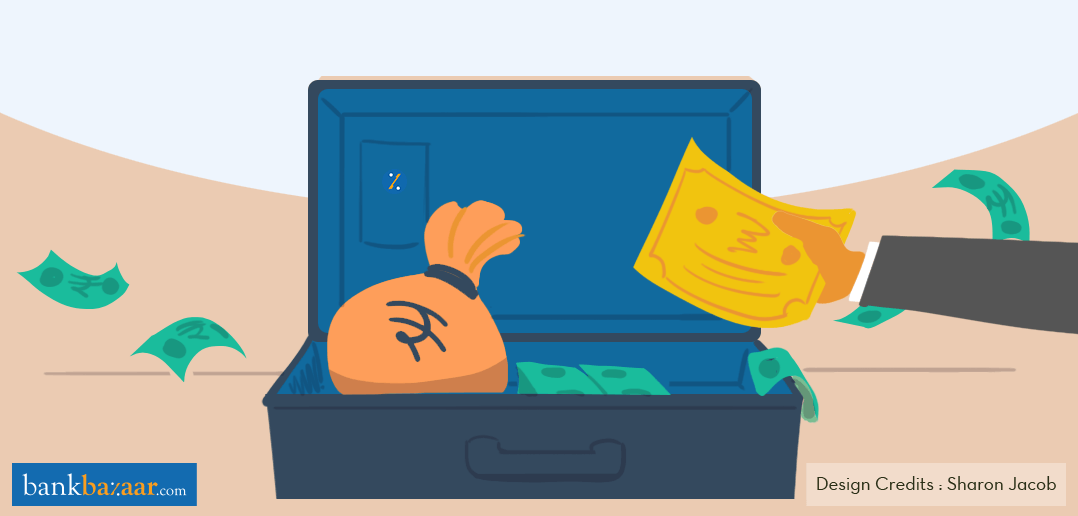All that glitters is gold, but that doesn’t mean you should hope for all your gold investments to shine! Here’s what you need to know before you invest in sovereign gold bonds.

What Are Sovereign Gold Bonds?
Sovereign Gold Bonds or SGBs are a means to own gold not for the sake of consumption but purely for investment. Here, you are handed the ownership of gold in the form of paper and not physical gold per se. In effect, you will be earning or losing off the gold market wave in relation to price.
Additional Reading: Different Ways to Invest in Gold
Why SGBs Over Actual Gold?
While interest received on gold bonds are subject to tax, the capital gains tax on redemption of SGBs (if held till maturity) are tax exempt; a clear benefit over physical gold. Secondly, the latter usually comes at a premium cost, whereas the value of these bonds is closer to the actual price of gold.
Another point that gives SGBs brownie points is that they don’t come with the downsides that physical gold brings to the table. For example, jewellery designs can become outdated and out of fashion in a matter of days, so the value of a piece of jewellery can dwindle at any given time. Oh, and don’t forget about the making charges that are involved in gold jewellery. It’s also noteworthy to mention that SGBs carry a low risk of theft in comparison to physical gold.
Further, SGBs are also accepted as collateral or security against secured loans by certain banks. This will be deemed as a gold loan after the loan-to-value (LTV) ratio to the value of gold as determined by the India Bullion and Jewellers Association Limited is set.
Now that you’ve understood how Sovereign Gold Bonds are different from physical gold investments, here are some things you may want to keep in mind before getting your investment game kick-started.
How You Can Invest
You can obtain, fill up and submit the application form via the following avenues:
- Bank branches
- Post offices
- Stock exchanges
- SHCIL (Stock Holding Corporation Of India Ltd.)
- Websites/mobile apps of specified banks
Since stepping out isn’t a desirable option these days, you can take the digital approach – complete an online application via websites or mobile apps of scheduled banks (you’ll need to have an active net-banking ID). Psst… online applicants get a discount too (currently ₹50 per gram)!
Do note that your PAN Card is mandatory for this application. Also, you can opt to have your bonds sent to your DEMAT account to make trading easier.
Note: Series IV of SGB, the fourth and last tranche of Sovereign Gold Bond Scheme for 2023-2024, is open from February 12, 2024 and will close on February 16, 2024. The bonds will be issued on February 21, 2024. The issue price is ₹6,263 per gram with a ₹50 per gram discount if bought online.
Additional Reading: Two Minute Guide: Tax On Your Gold
Maximum & Minimum Limits
Individuals can buy up to 4 Kgs of gold with a minimum permissible investment of 1 gram, while the maximum subscription limit for HUFs is 4 Kgs and 20 Kgs for trusts.
Lock-in Period & Tenor
Sovereign Gold Bond tenor is eight years with an exit option given only after five years – only on the dates of interest payout. As SGBs have a five-year lock-in period, which means you can exit only post five years, keep in mind that your investment plan must be at least five years long. It makes sense to channel all your long-term investment goals towards SGBs as opposed to short ones.
How It Accumulates
The accumulating is pretty similar to the SIP system you see in Mutual Funds, except for one minor difference; SIP units can be redeemed as per your need whereas SGB units can be redeemed only post five years.
Additional Reading: Still Confused About SIP Investment? A Guide To Help You Sail Through
Nature Of Returns & Interest Rate
Since SGBs are linked to the market, it totally depends on the gold rates at the time of maturity. The redemption price is in Indian Rupees and will be based on an average of the closing price of gold of 999 purity in the previous three working days. Given that the lifetime of SGBs is eight years, you should walk away with a decent stash of investment by the end of your investment period; way better than owning physical gold for eight years and not getting much value for it later on, don’t you agree? The guaranteed annual fixed interest rate on the issue price is currently 2.50% p.a. which is paid twice annually on the nominal value.
Secondary Market Scope
Transactions in the secondary market may or may not result in gains, because there may not be enough buyers to purchase the quantity you’re selling. Additionally, liquidity and price can greatly affect your transaction here. Nonetheless, you can trade SGBs on stock exchanges within a date specified by the issuer. For example, you could trade your SGBs on the NSE or BSE (among others) after the five-year lock-in.
Tax Implications
The interest earned on SGBs is taxable under the Income Tax Act of 1961. You cannot claim any tax deductions on your investment. However, in case you hold your SGBs for the entire eight-year tenor, you will be exempt from paying any capital gains tax. Also, you get indexation benefits on the long-term capital gains generated or when the bonds are transferred from one person to another.
Quantitative Example with Annual Interest and Taxation (1 gram)
Suppose an investor purchased 1 gram of gold in the first series of SGBs in November 2015 at the issue price of ₹2,684 per gram. The redemption price for this tranche is ₹6,132 per gram. Additionally, for this first tranche, the annual interest rate was set at 2.75% for 8 years. Let’s assume tax at a 30% tax slab. The investor’s gains can be calculated as follows:
Interest Calculation:
Annual Interest = Initial Investment x Annual Interest Rate = ₹2,684 x 2.75% = ₹73.81
Total Interest over 8 years = Annual Interest x Number of Years = ₹73.81 x 8 = ₹590.48
Tax on Interest:
Tax on Interest = Total Interest x Tax Rate = ₹590.48 x 30% = ₹177.14
Redemption Value:
Redemption Value = 1 gram x ₹6,132 per gram = ₹6,132
Total Gains:
Gains = Redemption Value + Total Interest – Initial Investment – Tax on Interest
Gains = ₹6,132 + ₹590.48 – ₹2,684 – ₹177.14 = ₹3,860.34
Absolute Percentage of Gain:
Absolute Percentage of Gain = (Gains / Initial Investment) x 100 = (₹3,860.34 / ₹2,684) x 100 ≈ 43.58%
In this example, the investor would have gained ₹3,860.34 on their initial investment in the first series of SGBs for 1 gram, considering annual interest at 2.75% for 8 years, and accounting for taxation at a 30% tax slab. The absolute percentage gain is approximately 43.58%.
The Final Word
Experts suggest that your decision should be based on your desired outcome. If you’re looking to meet a financial objective, then you should not allocate more than 10% of your investment portfolio towards SGBs. On the other hand, if you’re looking at SGBs as an investment, you can broaden your scope of sovereign gold bold investments.
Copyright reserved © 2024 A & A Dukaan Financial Services Pvt. Ltd. All rights reserved.


